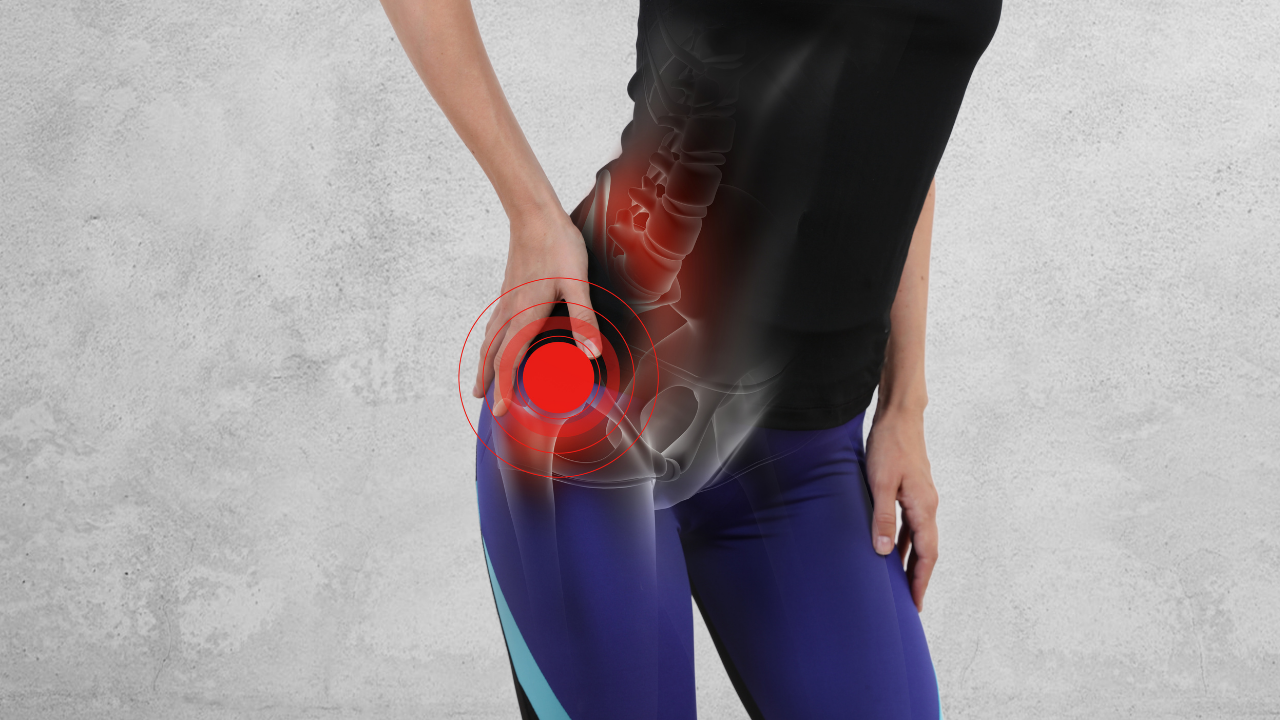Greater Trochanteric Pain Syndrome
INTRO:
Greater trochanteric pain syndrome (GTPS) is a general term used to describe disorders of the peritrochanteric space, including:
GTPS is a common cause of lateral hip pain and tenderness. While GTPS is seen in all age groups, it most commonly affects patients between 40-60 years old. While conservative treatment is effective for most patients with GTPS, many demonstrate symptoms refractory to physical therapy, non-steroidal anti-inflammatory drugs (NSAIDs), and corticosteroid injections (CSIs). Accurate diagnosis of the specific etiology of GTPS and the degree of gluteal tendon injury are critical to guiding appropriate treatment.
Pink et al. (2021), systematically reviewed the research and highlighted the clinical and radiographic findings that can differentiate GTPS from other causes of lateral hip pain and guide management.
RESULTS:
Clinical Tests:
Abductor tendon tears often present with abnormal gait and weak hip abduction.
Differential Diagnoses:
Intraarticular sources include:
OA, avascular necrosis, labral tears, FAI, femoral neck stress fractures, and loose bodies.
Extra-articular causes include:
Lumbar stenosis, and meralgia paresthetica.
CONCLUSIONS:
- Trochanteric bursitis.
- Abductor tendon pathology.
- External coxa saltans.
GTPS is a common cause of lateral hip pain and tenderness. While GTPS is seen in all age groups, it most commonly affects patients between 40-60 years old. While conservative treatment is effective for most patients with GTPS, many demonstrate symptoms refractory to physical therapy, non-steroidal anti-inflammatory drugs (NSAIDs), and corticosteroid injections (CSIs). Accurate diagnosis of the specific etiology of GTPS and the degree of gluteal tendon injury are critical to guiding appropriate treatment.
Pink et al. (2021), systematically reviewed the research and highlighted the clinical and radiographic findings that can differentiate GTPS from other causes of lateral hip pain and guide management.
RESULTS:
Clinical Tests:
- Tenderness to palpation over the greater trochanter (Sensitivity 80%; Specificity 47%)
- Pain with abduction against resistance (Sensitivity 38%; Specificity 93%)
- Pain with internal rotation against resistance (Sensitivity 44%; Specificity 93%).
- Pain with single leg stance (Sensitivity 38%; Specificity of 100%)
Abductor tendon tears often present with abnormal gait and weak hip abduction.
Differential Diagnoses:
Intraarticular sources include:
OA, avascular necrosis, labral tears, FAI, femoral neck stress fractures, and loose bodies.
Extra-articular causes include:
Lumbar stenosis, and meralgia paresthetica.
CONCLUSIONS:
GTPS encompasses a spectrum of pathologies and diagnosis can be challenging. Proper evaluation relies primarily on careful clinical examination. Traditional nonoperative management with activity modification, physical therapy, NSAIDs, and CSI remains the mainstay of treatment. In chronic symptoms operative techniques have demonstrated excellent outcomes.
SOURCE:
Pianka et al. 2021. Greater trochanteric pain syndrome: SAGE Open Medicine Volume 9: 1–12.
WANT INFO LIKE THIS SENT TO YOU?
Click here!
SOURCE:
Dattilo et al. 2020. Effects of Sleep Deprivation on Acute Skeletal Muscle Recovery after Exercise. ACSM

Click here!
SOURCE:
Dattilo et al. 2020. Effects of Sleep Deprivation on Acute Skeletal Muscle Recovery after Exercise. ACSM

Dalton Urrutia, MSc PT
Dalton is a Physical Therapist from Oregon, currently living and running the performance physiotherapy clinic he founded in London for Grapplers and Strength & Conditioning athletes. Dalton runs the popular instagram account @physicaltherapyresearch, where he posts easy summaries of current and relevant research on health, fitness, and rehab topics.
Want to learn more or contact him?
Reach out online:
@Grapplersperformance
Learn more online - new online discussion group included!
Want an approach that enhances your existing evaluation and treatment? No commercial model gives you THE answer. You need an approach that blends the modern with the old school.
Keeping it Eclectic...- NEW - Online Discussion Group
- Live cases
- webinars
- lecture
- Live Q&A
- over 600 videos - hundreds of techniques and more!
- Check out MMT Insiders















Post a Comment
Post a Comment